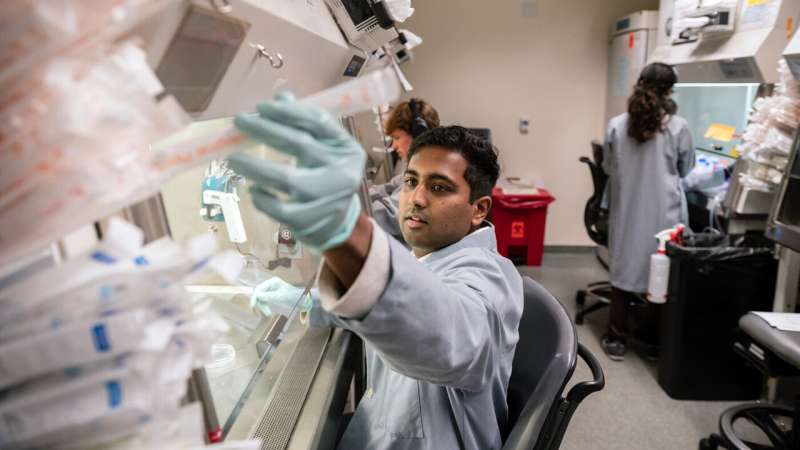Groundbreaking research has revealed that the genome editing process via the CRISPR-Cas9 technology operates differently in neurons compared to dividing cells. This discovery, published in the journal Nature Communications on November 18, 2025, highlights the complexities of gene editing in treating brain-related disorders and may significantly influence future therapeutic designs.
A collaborative team from the Gladstone Institutes, the Innovative Genomics Institute, and UC Berkeley conducted the study, aiming to address challenges that have hindered effective gene editing in nondividing cells like neurons. The lead researcher, Bruce Conklin, MD, emphasized the importance of understanding DNA repair mechanisms in neurons to ensure successful gene editing outcomes.
CRISPR-Cas9: A Dual-Edged Sword
The CRISPR-Cas9 system uses a protein known as Cas9 to make precise cuts in DNA. While this technology has revolutionized genetic editing, its application in neurons has been limited. According to Gokul Ramadoss, a Ph.D. candidate in Conklin’s lab and the study’s first author, most previous research has concentrated on dividing cells, which have different DNA repair responses.
The study revealed that neurons, which do not divide, exhibit unique DNA repair processes that can lead to varied outcomes of CRISPR-Cas9 interventions. As Ramadoss noted, “The rules of genome editing are different in nondividing cells like neurons.” This revelation opens new avenues for researchers aiming to develop effective treatments for genetic disorders affecting the brain.
To better understand these differences, the researchers needed a method for delivering CRISPR-Cas9 into neurons efficiently. Collaborating with Nobel laureate Jennifer Doudna, Ph.D., they utilized specialized nanoparticles known as “enveloped delivery vehicles” to transport gene editing molecules safely into cells.
Distinct Responses to DNA Damage
The research team generated neurons from induced pluripotent stem cells (iPS cells), which can be transformed into various cell types, including neurons. This allowed the scientists to compare the responses of dividing iPS cells to those of nondividing neurons while using the same genetic material.
The results were striking: while Cas9 activity lasted only a few days in dividing cells, it persisted for up to a month in neurons. Conklin pointed out that this extended presence of Cas9 raises safety considerations. “If Cas9 hangs around longer, it has more chances to make on-target edits, which we want. But it also has more chances to make off-target edits, which we don’t want,” he stated.
The study also found that the repaired DNA in neurons exhibited a significantly narrower range of outcomes compared to dividing cells. Conklin illustrated this by comparing it to restoring a masterpiece: “Imagine if someone slashed the Mona Lisa with a razor. Would you rather have many different people trying to put it back together all at once, or one dedicated expert who repairs it the same way every time?”
This predictability in repair mechanisms may lead to more reliable gene editing strategies in neurons and other nondividing cells, including heart muscle cells.
By uncovering these distinct responses, the researchers have begun to identify new strategies to guide neurons toward more beneficial gene editing results. This includes activating previously inaccessible DNA repair genes, which could enhance the precision of genetic edits.
The team, in collaboration with bioengineering expert Niren Murthy, Ph.D., developed lipid nanoparticles to precisely control the delivery of gene editing tools alongside molecules that inhibit specific DNA repair genes in neurons. This innovative approach allows for targeted cuts in DNA while managing the repair process effectively.
Conklin summarized the significance of their work, stating, “Our ultimate goal is to precisely control the gene editing process to deliver life-changing therapies. And now, we have important new tools to make sure we get this right.”
As researchers continue to refine these techniques, the implications for treating genetic disorders are substantial, potentially paving the way for breakthroughs in the management of various diseases.
